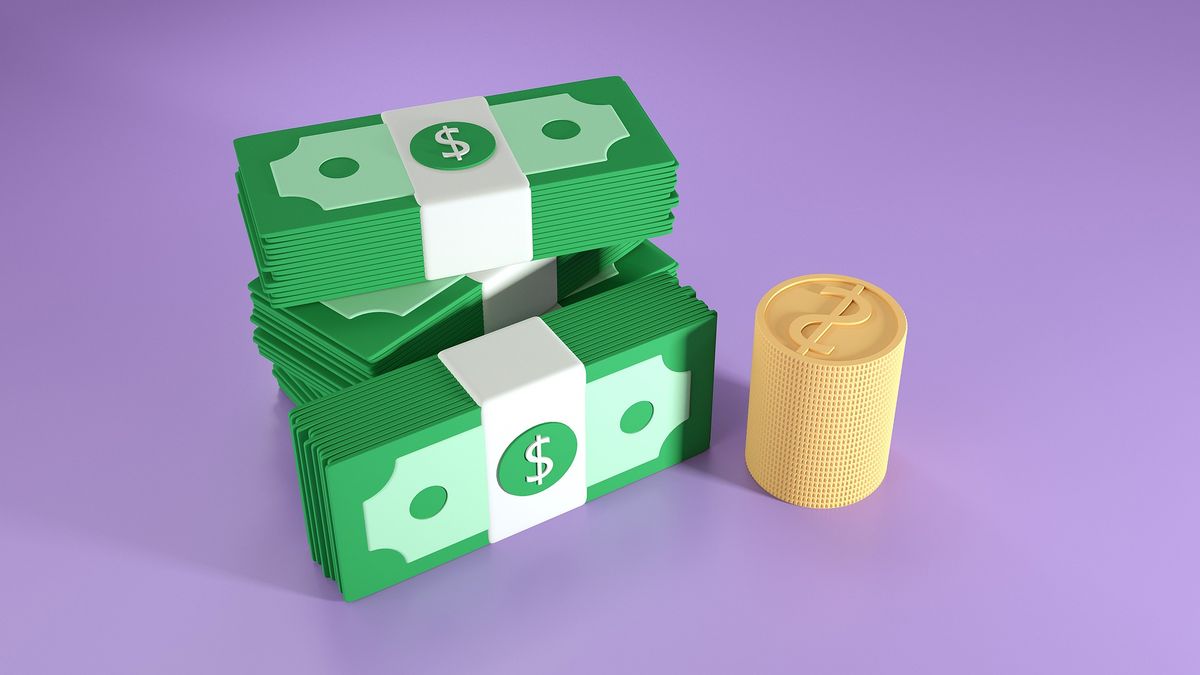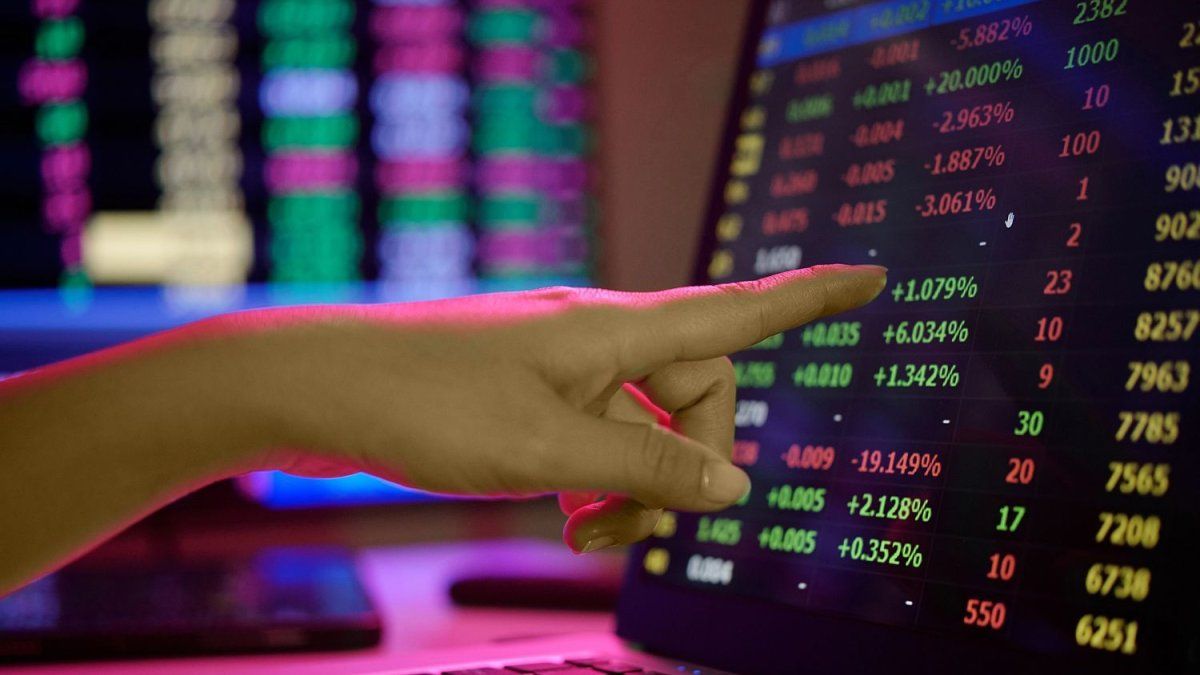The monetary liabilities of the Central Bank, added to the monetary base, bills and passes, reach 11 trillion, by the end of the year they could be around $14 trillion. The Central Bank pays a whopping $200,000 million in interest per month, by the end of the year it would be about $1.2 trillion. On the other hand, it would have to finance the treasury in approximately 2.4 billion. With an expansion of the monetary base of barely $400,000 million, we would reach the aforementioned $14 trillion. With such a large drop in reserves ahead, and the great expansion of pesos, it would not be surprising if at the end of the year we have a dollar of $400.
Currently the dollar is worth around $300. Who would sell the dollar at $300 if at the end of the year it could be worth $400? No one, unless you find an instrument that gives you a higher return and is more reliable than the greenback.
What to do with the dollars?
What we have to know is that today the State does not generate trust, and even less the financial instruments it manages, which on the other hand show very low returns. For example, whoever sold a dollar today at $300 could place it in a discount letter with maturity on September 30, said letter yields 10%, which would leave us with a dollar of $330 on September 30. It is clear that it is not attractive to sell dollars to make a placement in pesos, in a State instrument with the mistrust that both generate, and little profitability.
An interesting alternative would be to sell dollars and place them in a fixed term adjusted for inflation, in this case not all banks receive these deposits, and those that receive these deposits require special authorizations for amounts greater than one million pesos. It is not an instrument that can change the history of the market.
Regarding bonds, we have bonds in pesos adjusted for inflation, the first problem is yield, a bond maturing in December yields inflation minus 3.0%, this is not pleasant. The second thing is that the bond is issued by the State, with all the mistrust that this generates.
Selling dollars does not have as a counterpart a financial instrument as attractive as the greenback itself. This implies that those who have dollars have no incentive to sell them, except for a state of necessity that forces them to change.
We have made all this preamble to explain that the dollar market is without a seller in sight, and with a buyer who is shy of validating a value greater than $300 but who cannot find an alternative product to invest. Therefore, it can continue to rise, but in the event of a drop, many will be buyers, which will not stop its climb to $400. It would be best to have merchandise, especially imported ones, as scarce goods will rise more than the dollar.
Context doesn’t help
The economic context does not help this time, the lack of gas oil in the economy has not been overcome, gas shortages are expected, imports are limited, therefore many products are not replenished, which significantly raises the price of these products. Inflation for the remainder of the year could be higher than that of the first semester, which was 36.2%. By this we mean that many economic agents could sell dollars to acquire merchandise, but in many cases that merchandise is not available.
The political scenario is not a minor issue, where the differences between the president and the vice president lead on more than one occasion to not touching the investments or postponing all kinds of portfolio change decisions until these differences are corrected.
Argentine debt bonds in dollars have not stopped falling, with parities ranging from 18% to 23% of their nominal value, at default prices. If Argentina were to achieve a debt restructuring in the future, they would surely be worth more than they are today, however, the market despises them, so they are not a good place to allocate short-term liquidity, it is a long-term investment waiting for a next government to rescue them from the hole they are in.
Conclusions
. – Nobody will sell a dollar with such a rarefied political context, without clear state policies, and with a cabinet that thinks so differently in all its lines.
. – The dollar today does not have an alternative instrument that is reliable to earn the same or greater amount of money that can be earned by having dollars.
. – Buying merchandise in this context is a very good option, but the closure of imports left many products without a replacement price, therefore, nobody wants to sell what is scarce.
. – It does not make much sense to collect more stock of merchandise than is necessary to trade, if the economy enters a recession scenario. Collecting dollars in the head of a human person is a very good option, since the highest value does not pay income tax. Merchandise within a legal entity can generate positive holding results and pay income tax.
. – Banks do not accept large amounts in fixed terms adjusted for inflation, since there is no counterparty to take these credits, the operation is scarce. It is an excellent alternative but there is no volume.
. – The government expects the field to liquidate soybeans. About a harvest of 43.3 million tons, about 20 million tons have already been sold, of this total there are affidavits of sales abroad of 16 million tons. It is false that there are few settlements, what happens at this juncture is that soybean prices have collapsed in Chicago, the FOB price of Argentine soybeans is US$586, the producer is paid US$381 official, and If you want to convert this amount into dollar bills, you have US$166 left. The reduction between this last value and the FOB price is 71.7%. So it is difficult for sales to be activated at this juncture.
. – For the next campaign there is a climate forecast of drought, and with the current values, planting soybeans would leave a profit of US$26 official per hectare, before paying taxes, as long as 40 quintals of production per hectare are obtained, if there are drought and produce less, the producer will be working at a loss.
. – The dollar is the dollar because in Argentina the government does not show a single idea in its cabinet. There are no dollars to import and replacement prices for imported products do not exist. Inflation took an upward path. Who sells dollars does not have a financial instrument or merchandise where to place it. The global context does not help, there is a global recession forecast, grain prices fall and interest rates rise in the world.
. – The government is going through a bad internal and external business climate, the strange thing is that when it has to make political decisions, instead of clarifying it darkens.
To expand this information you have the possibility of subscribing to private reports. Probable scenarios for the coming Argentina, the judicial scenario and its link with the economic scenario, institutional problems in sight. Fixed-term stock in dollars and market uncertainty.
Source: Ambito
David William is a talented author who has made a name for himself in the world of writing. He is a professional author who writes on a wide range of topics, from general interest to opinion news. David is currently working as a writer at 24 hours worlds where he brings his unique perspective and in-depth research to his articles, making them both informative and engaging.




